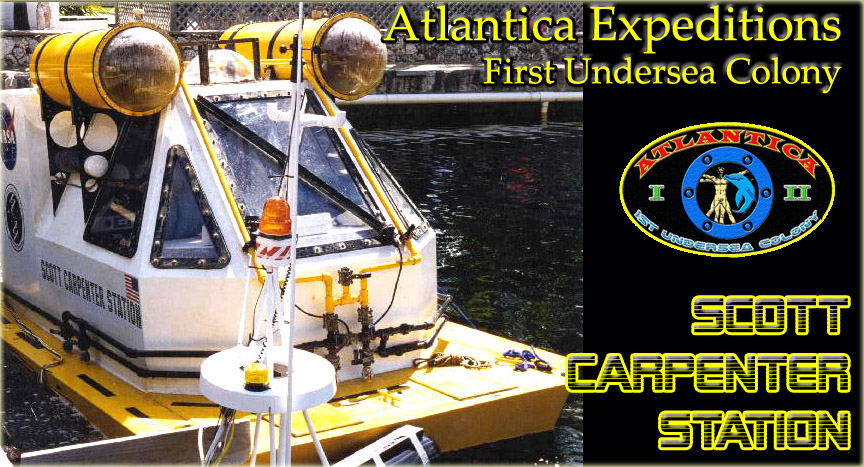

The Scott Carpenter undersea habitat was designed by Dennis Chamberland and operated for a total of 12 weeks during the summers of 1997 and 1998 in Key Largo, Florida. It was formally known as the "Scott Carpenter Space Analog Station" because its primary mission was to demonstrate the ways in which the ocean environment could be used as an analog to the space environment.The SCSAS was unique in several ways. It was the first habitat ever designed to be launched from an ordinary boat ramp and taken to schools, museums and other public venues, offloaded and toured by the general public. The SCSAS was shown in such a venue at EPCOT Center in Orlando in the fall of 1997 between missions.
The SCSAS was also designed as an undersea laboratory and Principal Investigators conducted a series of experiments in seed viability, in the growth of plants in hyperbaric environments as well as a series of engineering investigations in habitat design.
The SCSAS systems engineer was Joseph M. Bishop.
The Scott Carpenter Station at Key Largo During its 1997 Shakedown
On public exhibit at EPCOT Center
On public exhibit at Seaworld Orlando - Left to Right
Unknown, Mark Ward, Joseph Bishop, Dennis Chamberland, Claudia Chamberland, Scott Carpenter,
Unknown, Sharon Kinsey(?), Bob Barth
Dennis Chamberland and Scott Carpenter at the Comissioning Ceremonies
John F. Kennedy Space Center - December 1997